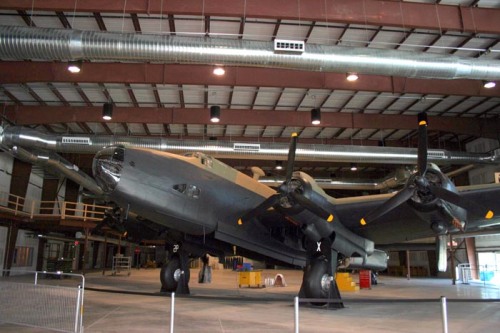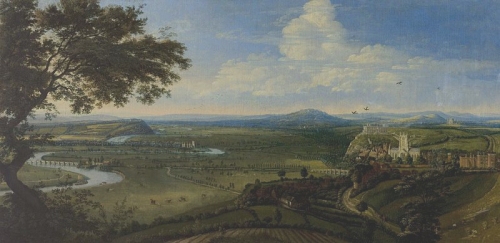Flight Sergeant Thomas Weightman, as we have seen, survived the crash at Dilhorne described in my last post The Luckiest Man in the World (3). Tom is listed as an Air Gunner. I suspect that he was the tail gunner and that is why he was not killed. The impact he had to endure was much less forceful at the back of the aircraft. Furthermore, he was further from any fire than the rest of the crew. And so, he survived. By this time he must have felt that he was extremely lucky. Perhaps he even experienced “survivor guilt”:
Let’s finish on a positive note. And one that explains the title of the post. After his fortunate escape, Tom Weightman joined 644 Squadron who flew Halifaxes and transported supplies for Special Operations Executive operatives, usually to Norway and Denmark:
On April 23rd 1945, probably without the dog, Tom flew off to Scandinavia in a Halifax Mark VII, serial number NA337, squadron letters 2P-X. It was Operation Crop 17, tasked with supplying the Norwegian resistance, the Ling, with 13 containers and 2 packages containing rifles, food, and clothes. These were successfully dropped but the aircraft flew off course by accident and was hit by German anti-aircraft fire. The pilot had to land somewhere, so he ditched the stricken plane in Lake Mjøsa which was the only flat area around:
The dinghy should have deployed automatically but it failed to do so. I presume that the members of the crew, as the cold, cold waters rose around them, must have decided to try to swim to shore. They could not have known that this was the largest lake in Norway. Alas, they all died from hypothermia. Flight Engineer Goronwy Amman Bassett (34) from Swansea. Wireless Operator Alec Naylor (22) from Oakenshaw in Yorkshire. Navigator Walter Reginald Mitchell (23) from East Dulwich in London. Bomb Aimer Gordon Russell Tuckett (23) from Cardiff and Pilot Alexander Turnbull (27) from Edinburgh.
The Tail Gunner and “The RAF’s Luckiest Man”, Tom Weightman, meanwhile, had by now recovered consciousness after being knocked out by the impact of the aircraft hitting the surface of the lake. He awakened to find all of his colleagues had gone. Water was still rising inside the Halifax so he climbed out through the upper escape hatch and walked out onto the wing. The dinghy was still in its special cupboard in the wing so he climbed back into the aircraft and released it manually with a winch. He then set off paddling across the cold waters of the lake trying to find the rest of his crew. This is the only picture I could find of a deployed dinghy:
There were no replies, though, to Tom’s shouts and it was far too dark to see anybody in the ice cold water. When it got light, the locals found Thomas in his dinghy and looked after him and made sure he was in good health. And then, quite rightly, they handed him over to the German Army because they feared, quite rightly, appalling reprisals to their families if they harboured an RAF flyer. And after just 14 days of captivity, the war ended and Tom Weightman was a free man. He was to have 62 more years of life than his colleagues in the 644 Squadron Halifax and 63 more years of life than Jack Sweeney.
Even his plane was lucky. It lay sleeping peacefully at the bottom of the lake for 50 years. And then somebody’s sonar turned up a very strange fish:
And then the Halifax Aircraft Association dived down, found it, rescued it, restored it in magnificent fashion, took it to the RCAF Memorial Museum at Trenton in Ontario and there it remains to this very day. If you ever manage to see it, make sure you look carefully at the rear turret and wonder what made the man in it so special.:
The Norwegian lake is still there. In winter it freezes over and recently it played host to some of the events in the Winter Olympics:
 I could not have written this blog post without recourse to this website.
I could not have written this blog post without recourse to this website.

















































